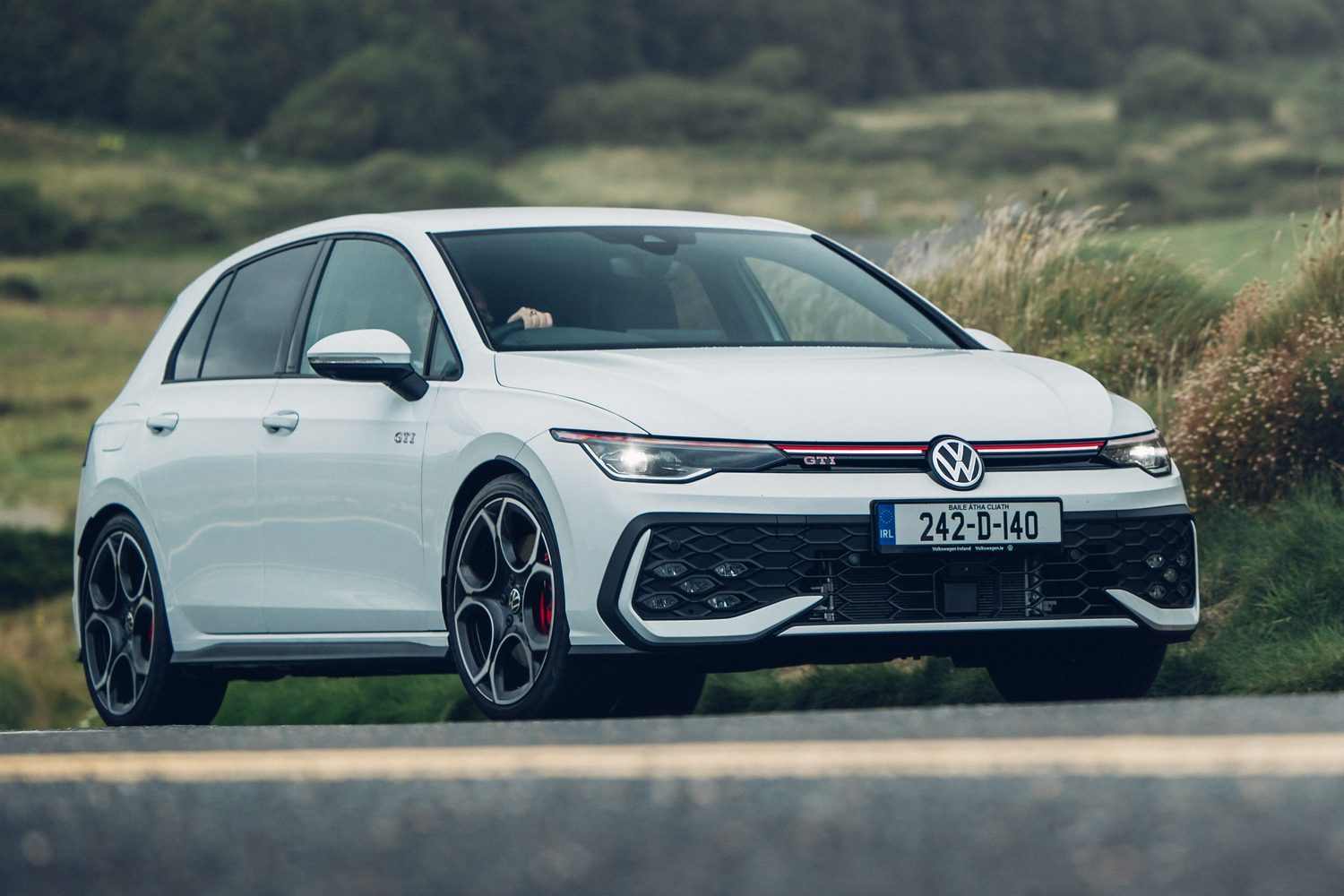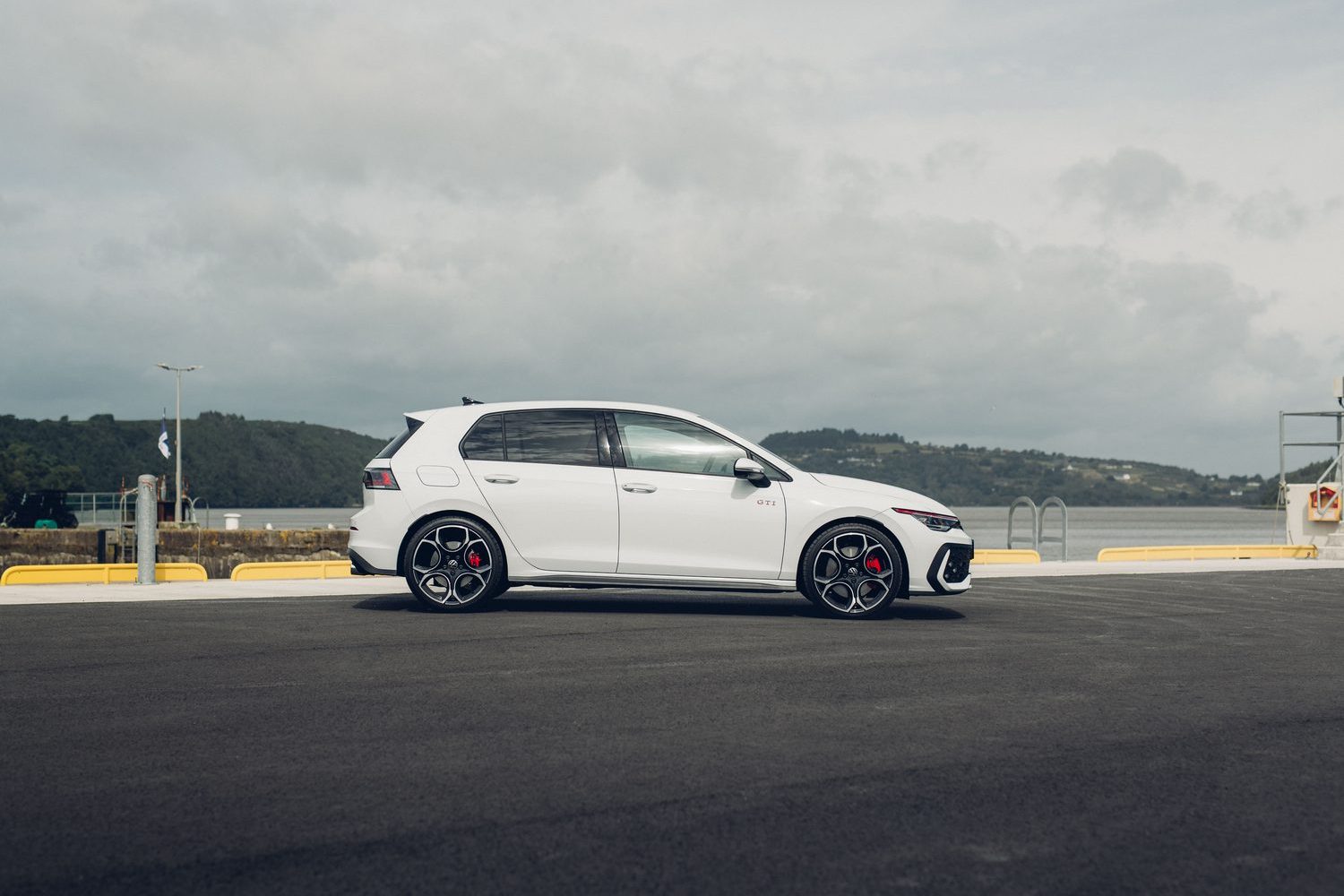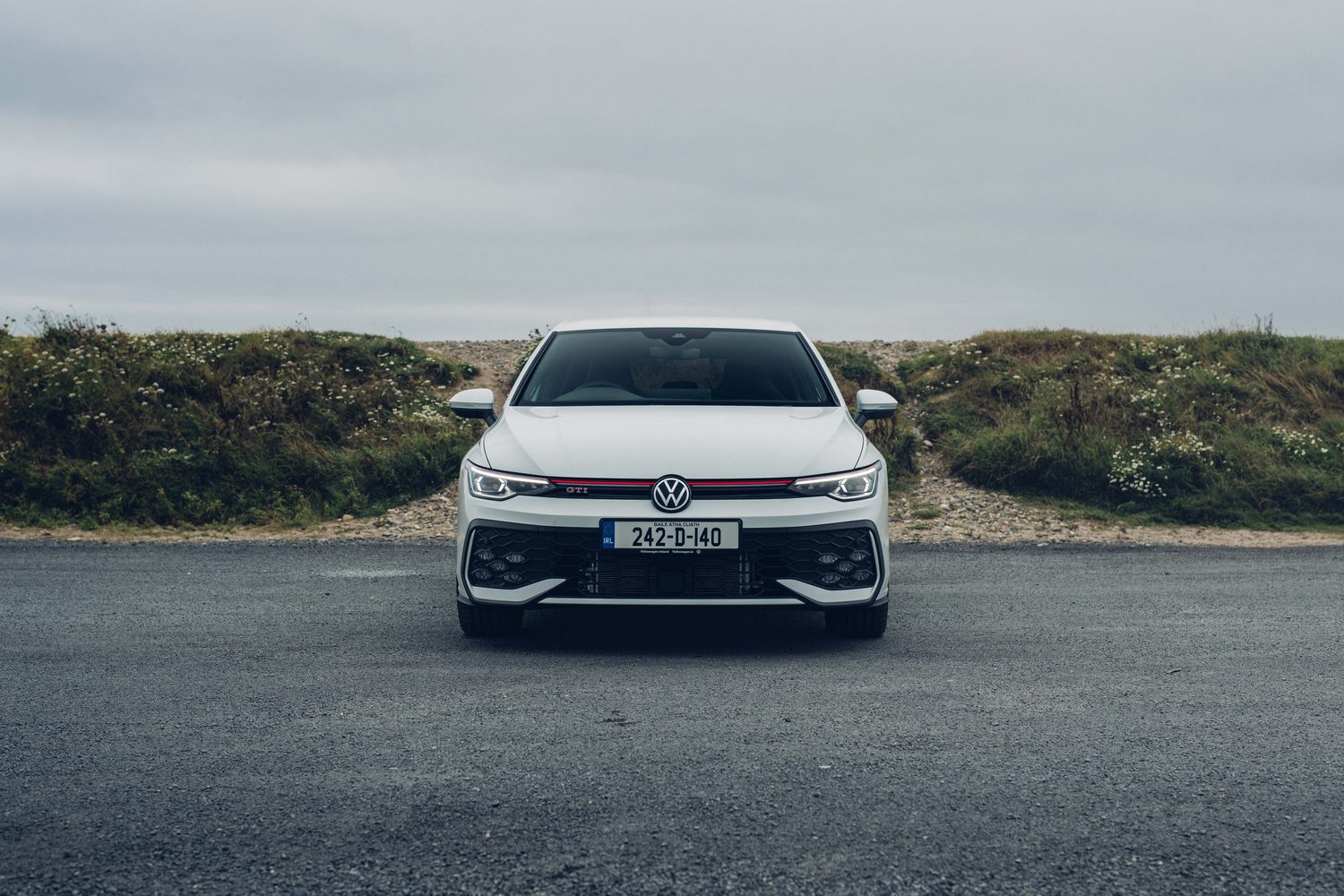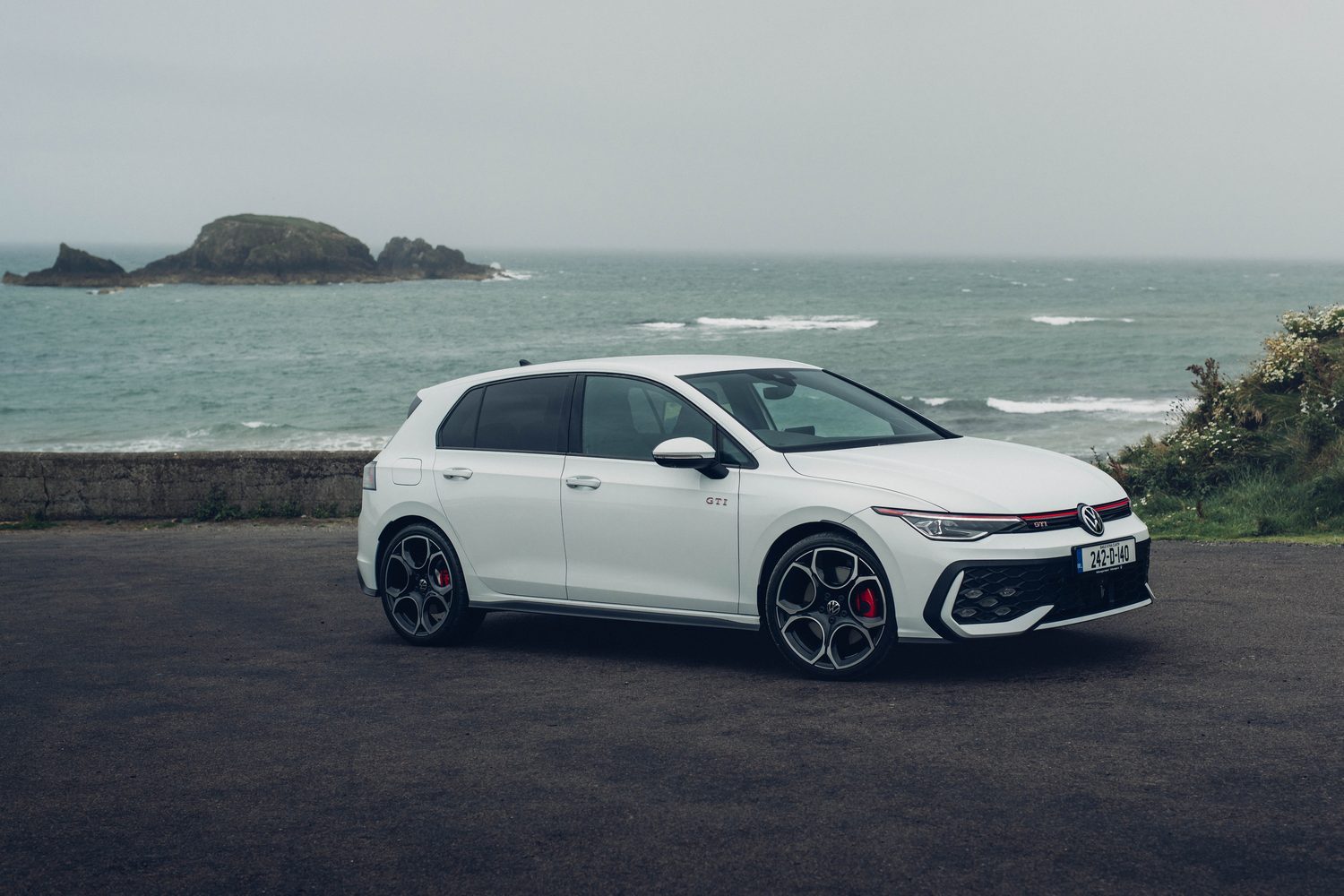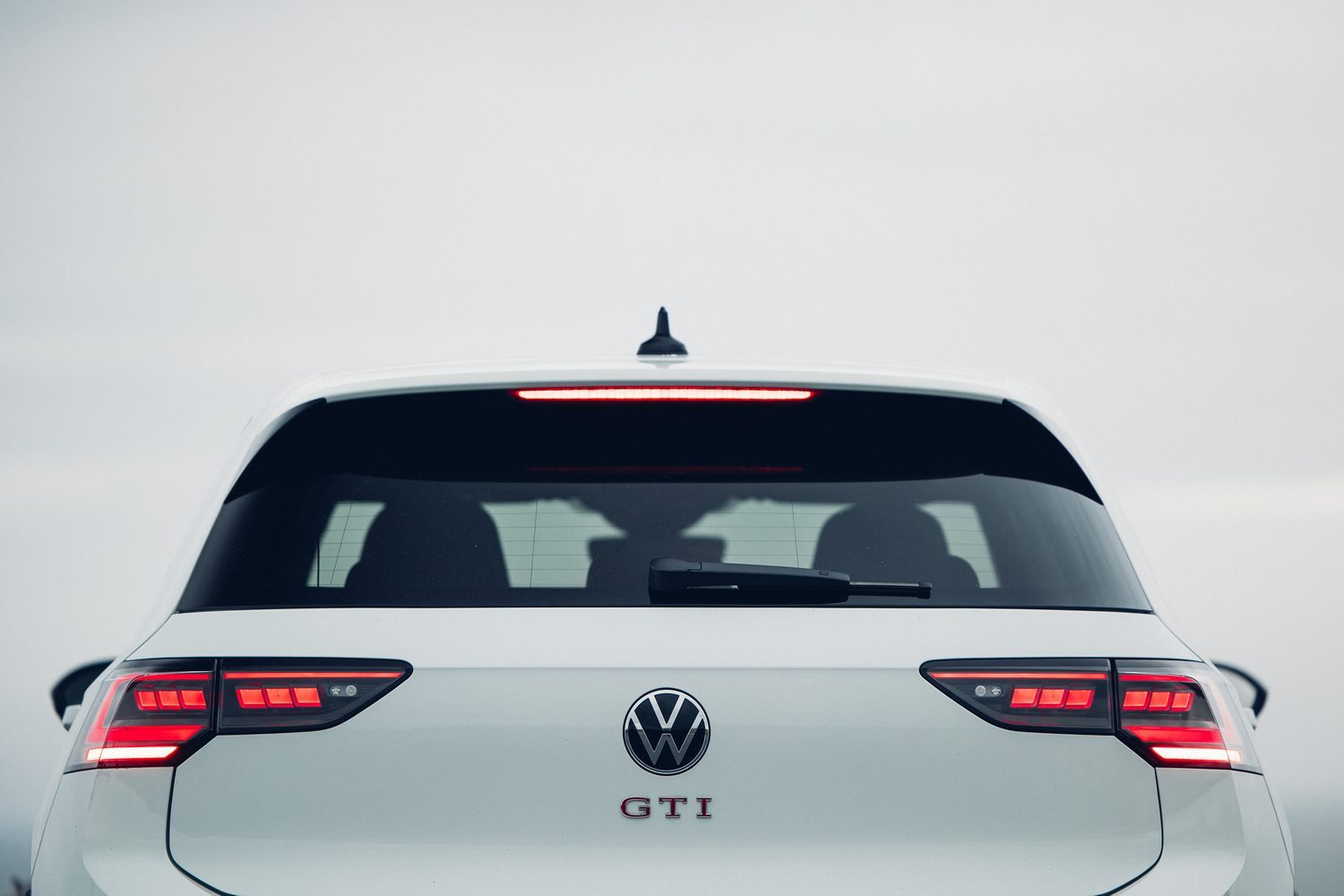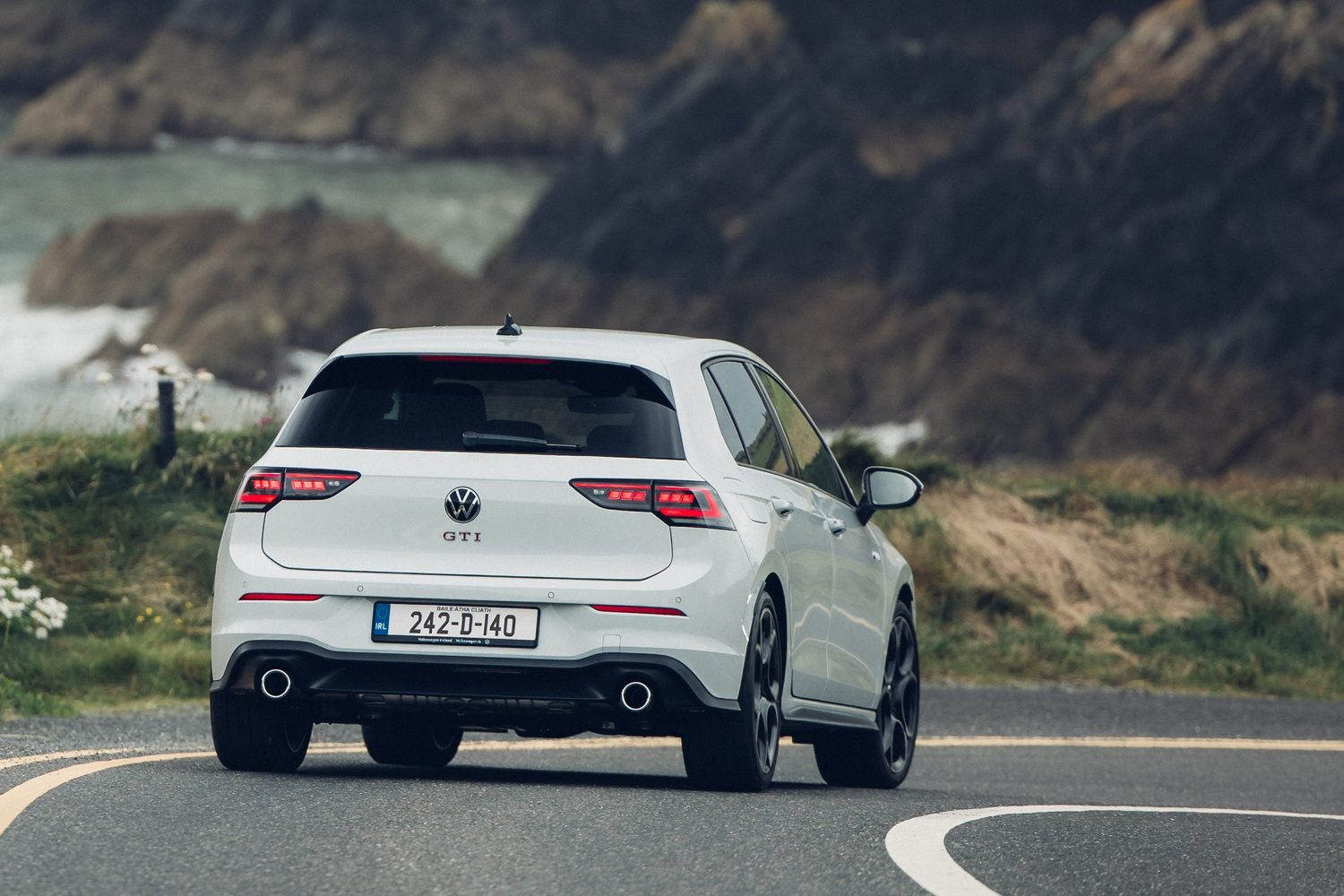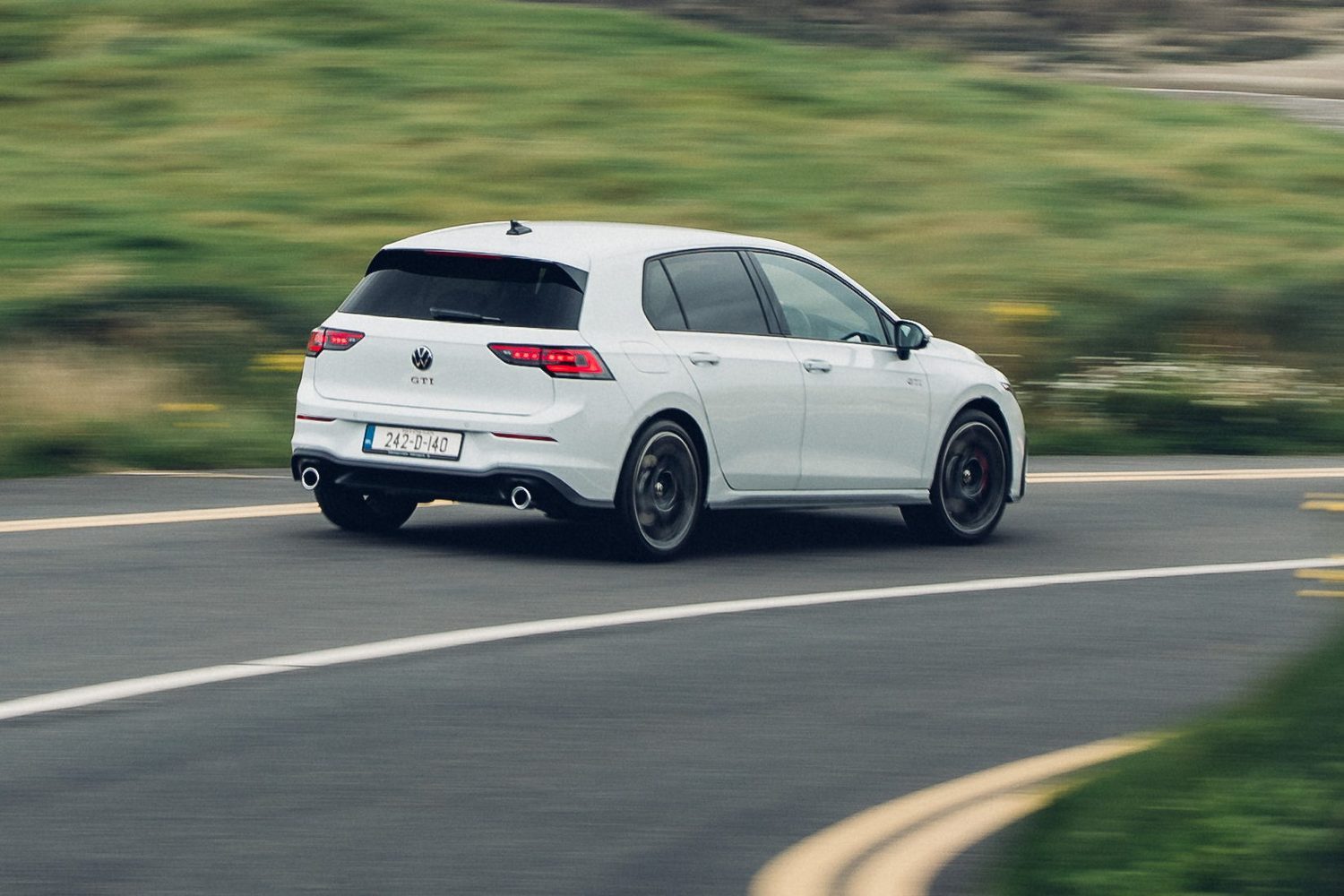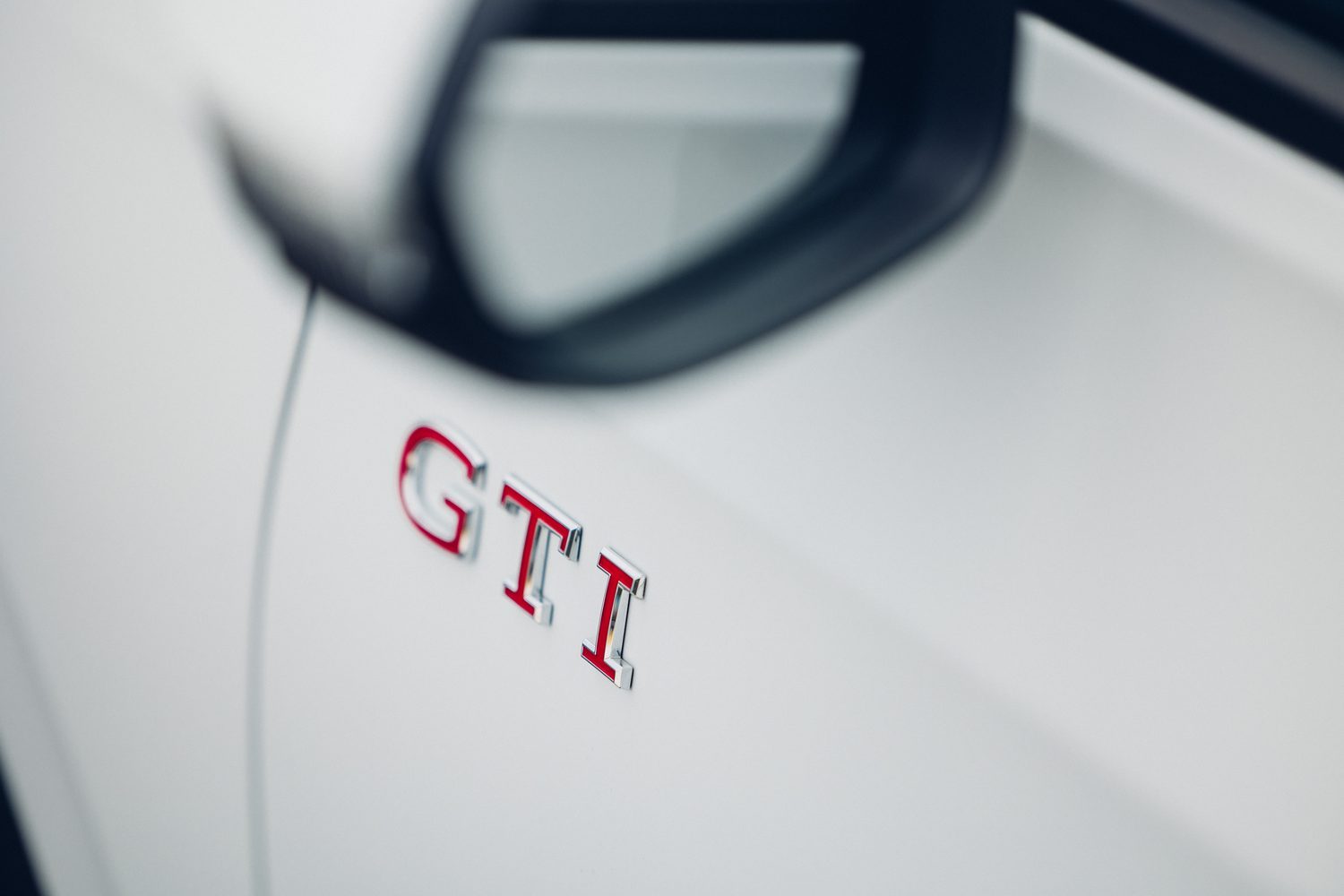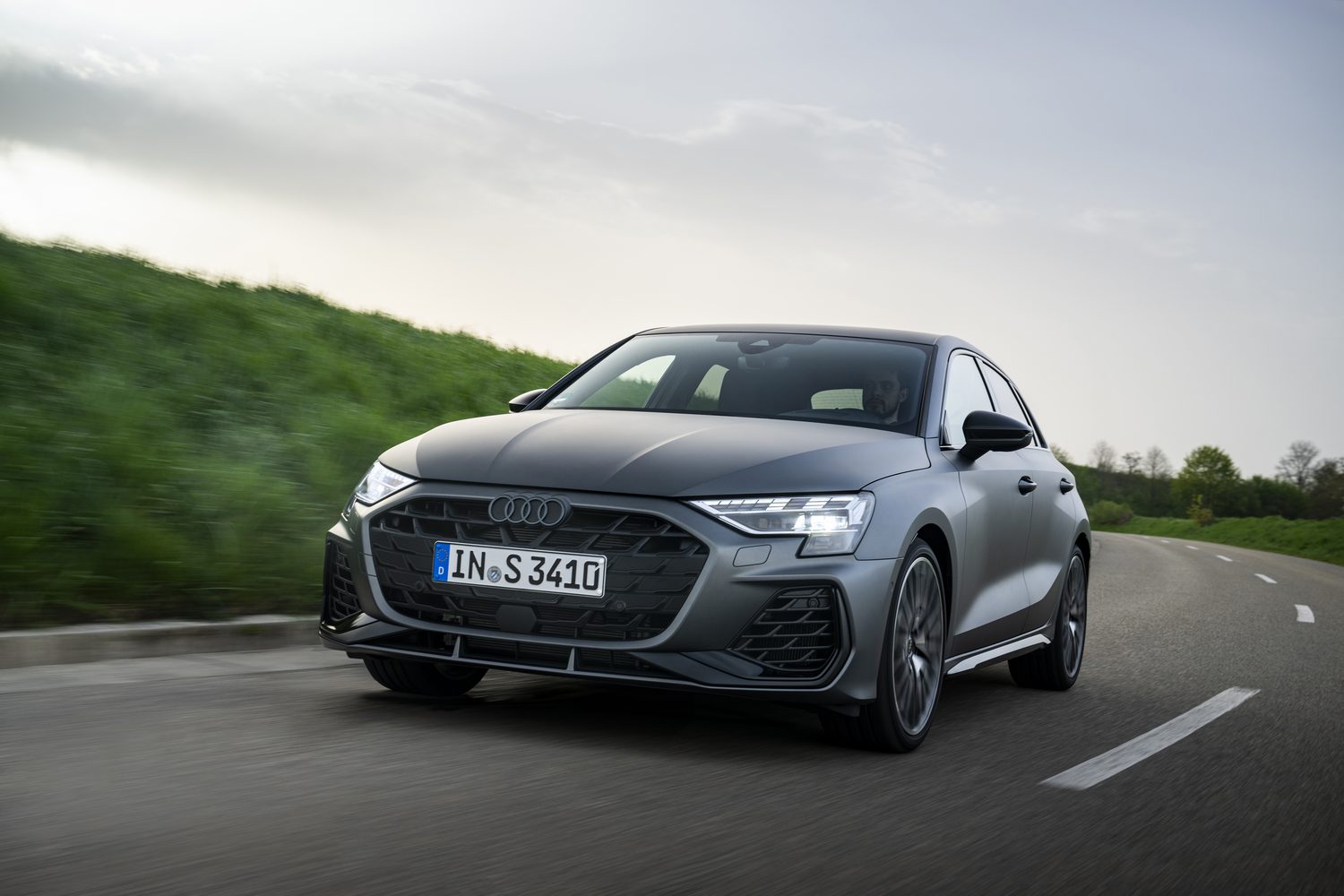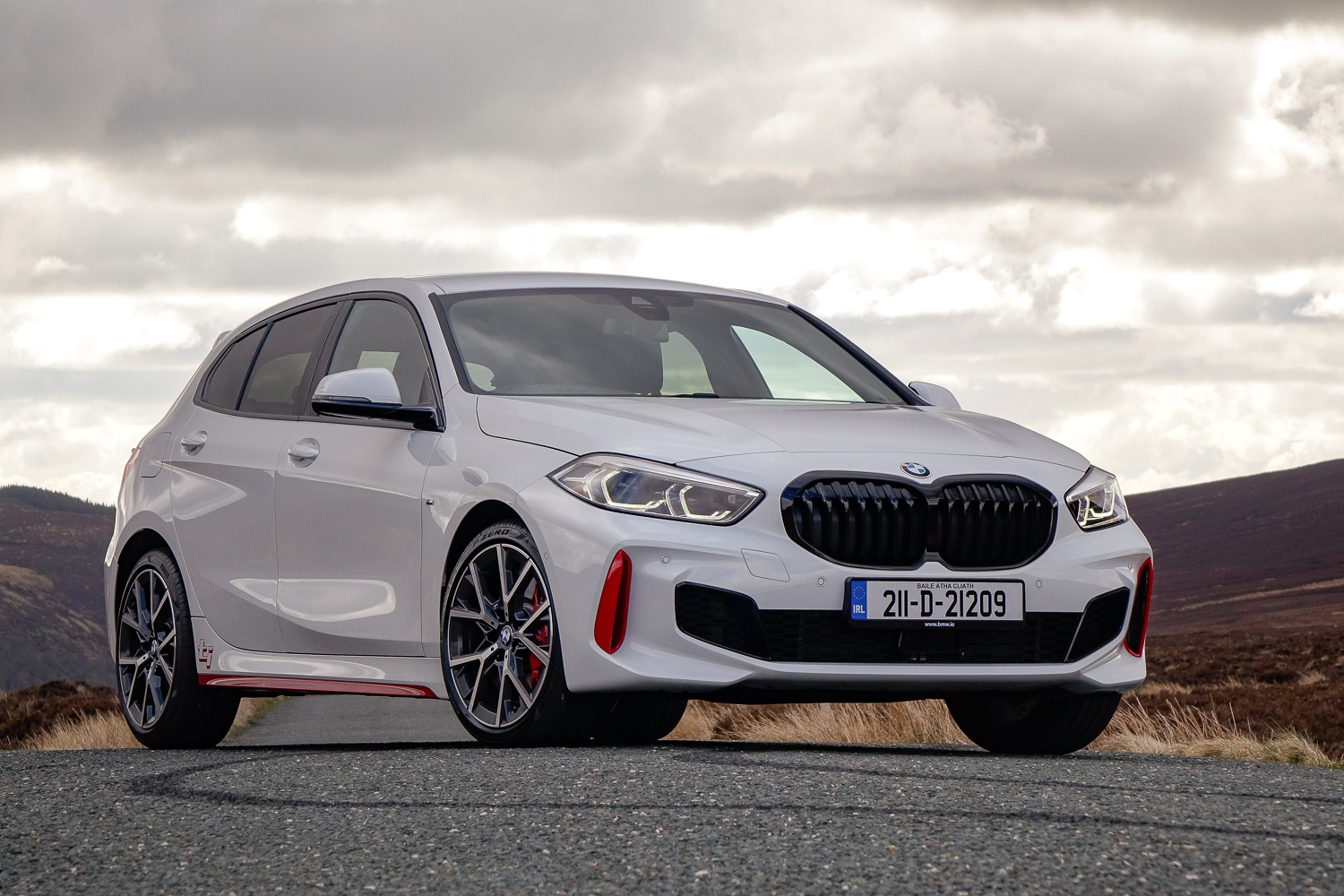The Volkswagen Golf GTI is credited with creating the hot hatchback class back in the seventies, and decades of evolution since then have made it one of the best all-round models on offer. Its combination of performance, practicality and dependability means it has a dedicated following. The eighth-generation Golf introduced in 2020 added more tech than ever to the formula, but for the ‘Mk8.5’ update Volkswagen has rolled back on some of the quirks to help boost the Golf’s general appeal and claw back its reputation as a car for all occasions. We tried out the base GTI on Irish roads and at Mondello to assess the improvements.
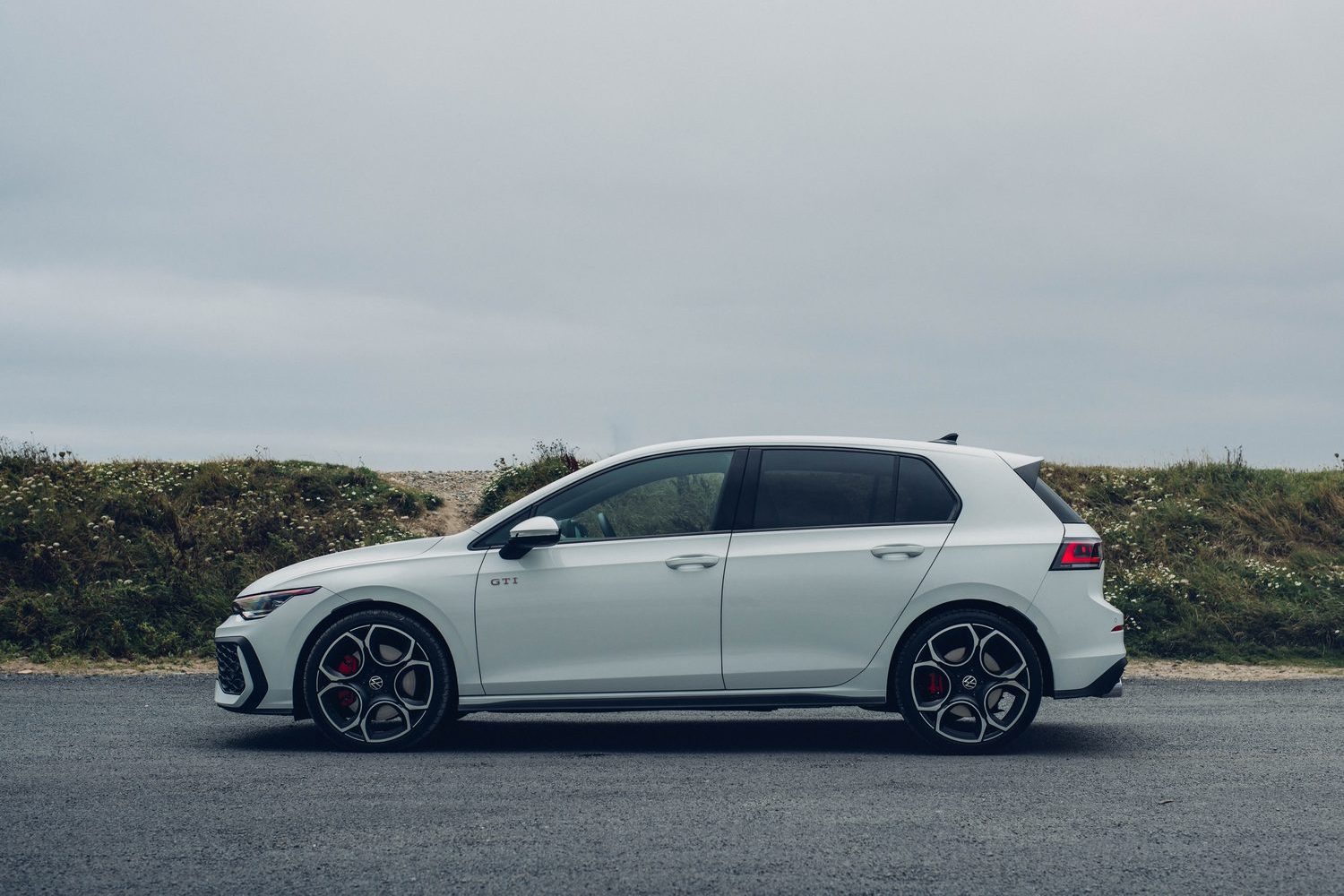
What has changed inside and out of the new VW Golf GTI?
As with most mid-life facelifts, it will only be the most dedicated GTI fans that will likely be able to spot the updates to the Mk8.5. What’s more, the most obvious of these will only be visible at night, with Volkswagen’s ‘IQ.Light’ matrix LED headlamps now fitted as standard. The VW badge on the nose can also be illuminated, along with a light bar across the front of the car. At the back, the lights have been redesigned, and there’s a new 18-inch alloy wheel design as standard, while 19-inch wheel options are available, too - as pictured.
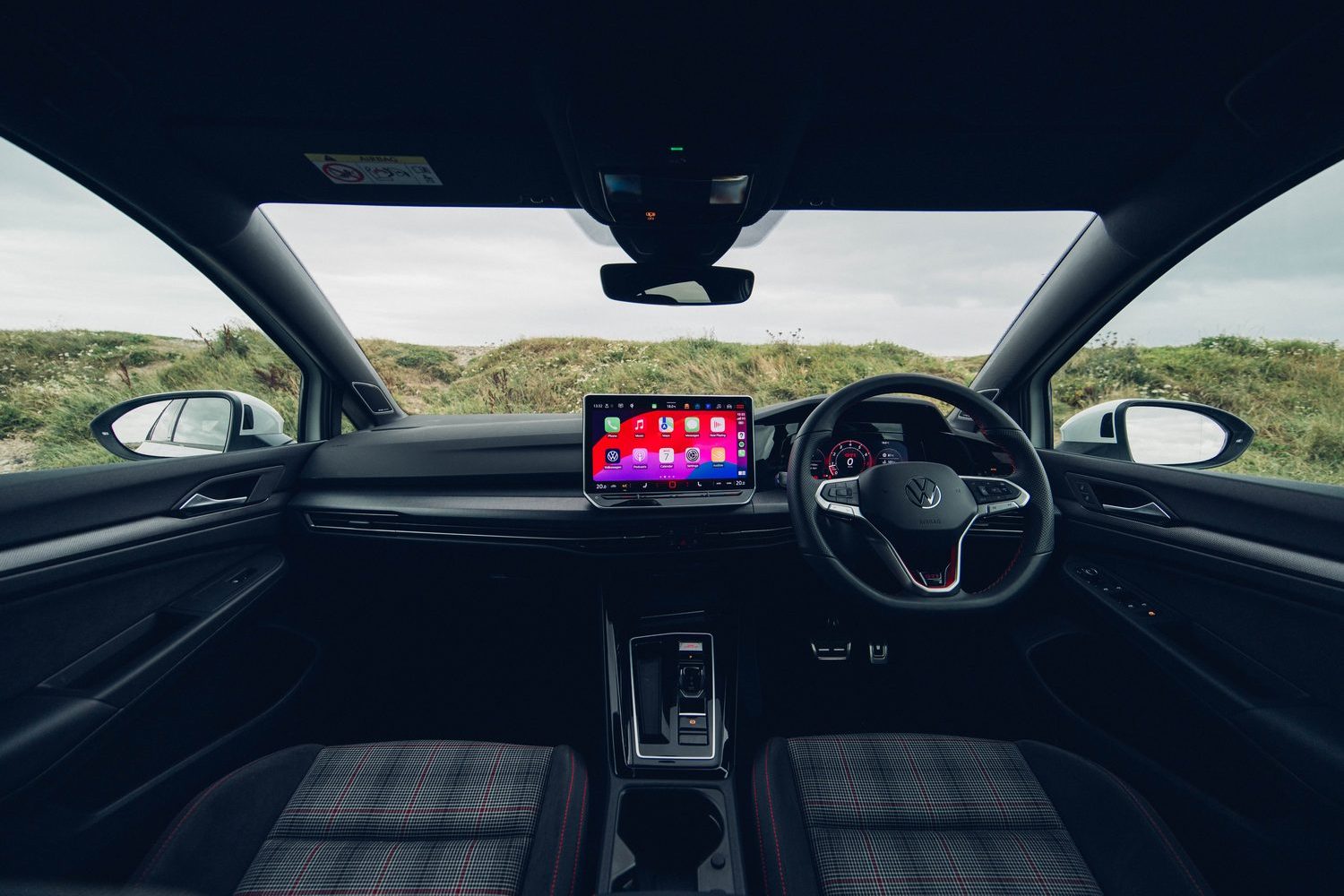
Inside, the cabin features the 12.9-inch touchscreen that’s now standard across the Golf line-up, and this has a new voice control system that incorporates ChatGPT artificial intelligence. We’re not fans of this technology in general, but each to their own. There are new sports seats with redesigned fabric upholstery, too, but the GTI’s ubiquitous red stitching is retained. Other updates include illumination for the touch-sensitive volume and temperature sliders below the main screen, while physical buttons have been added to the multifunction steering wheel in place of the previous haptic-feedback items. We’re very happy about this.
How much is the Volkswagen Golf GTI?
The Golf GTI starts from €57,750 and the 265hp 2.0 TSI model is the sole engine option for now. It’s expected that the GTI range will expand to include the 300hp Clubsport version soon, though.
The standard car comes with a healthy list of standard equipment. As well as LED lighting and the new infotainment setup, the revised Golf GTI features adaptive cruise control, a driver tiredness monitor, adaptive main beam control, parking sensors all round and a reversing camera, lane assist, road sign recognition, LED ambient cabin lighting, heated front seats, three-zone climate control and keyless entry.

The 12.9-inch infotainment screen includes built-in navigation, or you can use smartphone mapping wirelessly via Bluetooth in Apple CarPlay or Android Auto. There are four USB-C sockets dotted around the cabin - two up front, two for back-seat passengers - and a cooled wireless charging pad up front, too.
Driving the Volkswagen Golf GTI
Our test car was fitted with the optional DCC system, offering adaptive damping across all driving modes and an Individual setting allowing you adjust the baseline damping in 15 discrete steps. Interestingly, the ‘softest’ is three levels below the default Comfort mode while the most extreme is three above the standard Sport level. Within the new touchscreen you can alter the steering, the engine response, the exterior and interior engine sounds, adaptive cruise control, air conditioning and light assistance within the Individual mode, and there’s one overall Eco mode as well for those hoping to maximise distance between fuel stops.
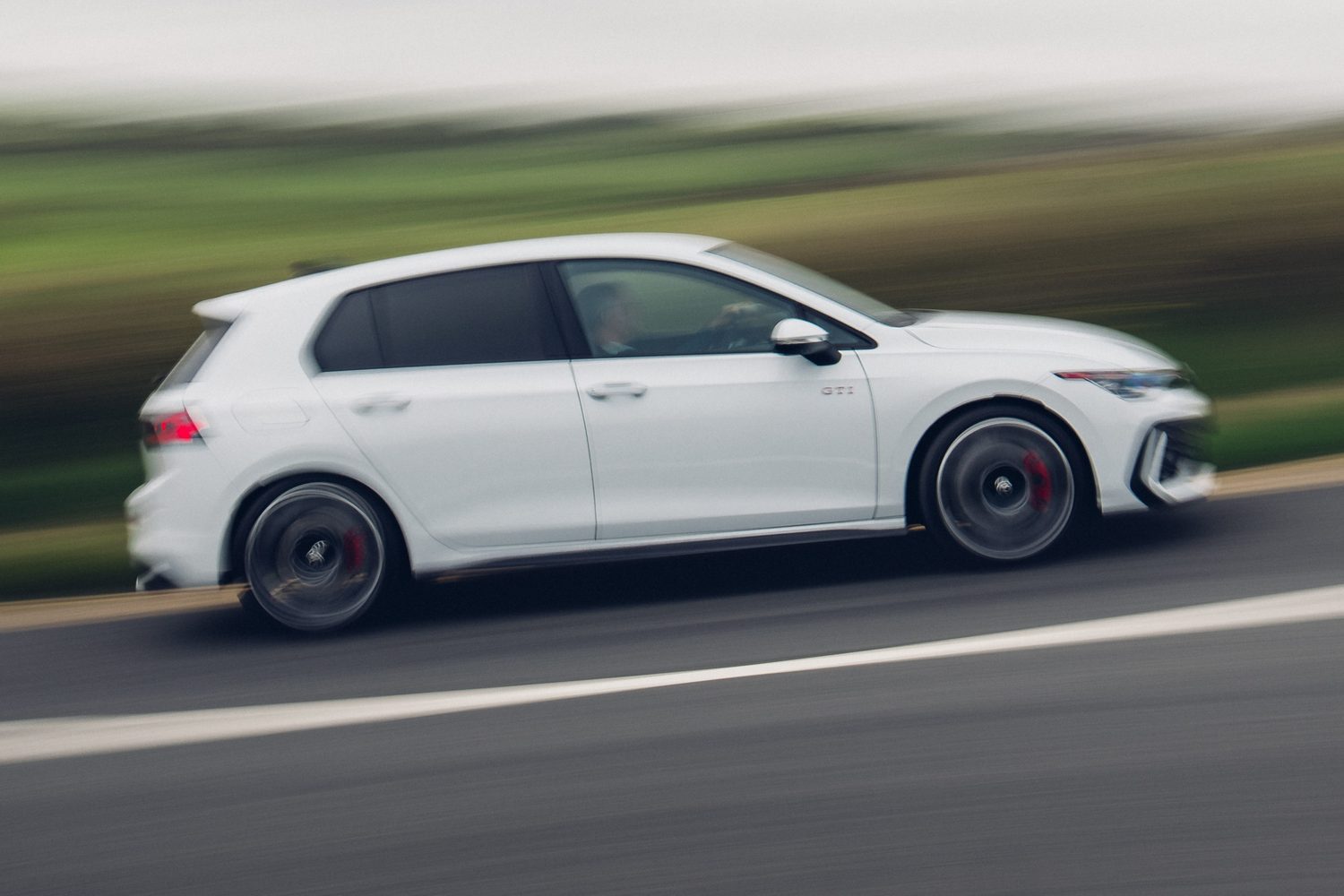
New for the regular GTI (carried over and updated from the previous GTI Clubsport) is the Vehicle Dynamics Manager, effectively central control for all the driving sub-systems that affect the car’s dynamic handling. Even without DCC fitted it works with the stability control and the electronically controlled front differential lock (standard fit on the GTI) to optimise the car for the given conditions, but it is enhanced greatly by the addition of the adaptive damping, itself improved in the name of agility and response to steering inputs.
Volkswagen didn’t stop there, as it also redeveloped the variable-ratio power steering system. Called ‘Progressive steering’ by the firm, it features a more powerful electric motor than in the standard Golf so it can keep up with rapid changes of direction and has variable-ratio gearing so that response to inputs when driving straight are smooth and not too fidgety, but the more you turn the steering wheel, the faster the front wheels respond. That’s great for parking manoeuvres, but even more rewarding on a twisty road. The best thing about it is that you don’t really feel anything odd in the steering; the GTI just responds crisply to your inputs and there’s decent feedback through the wheel as well.
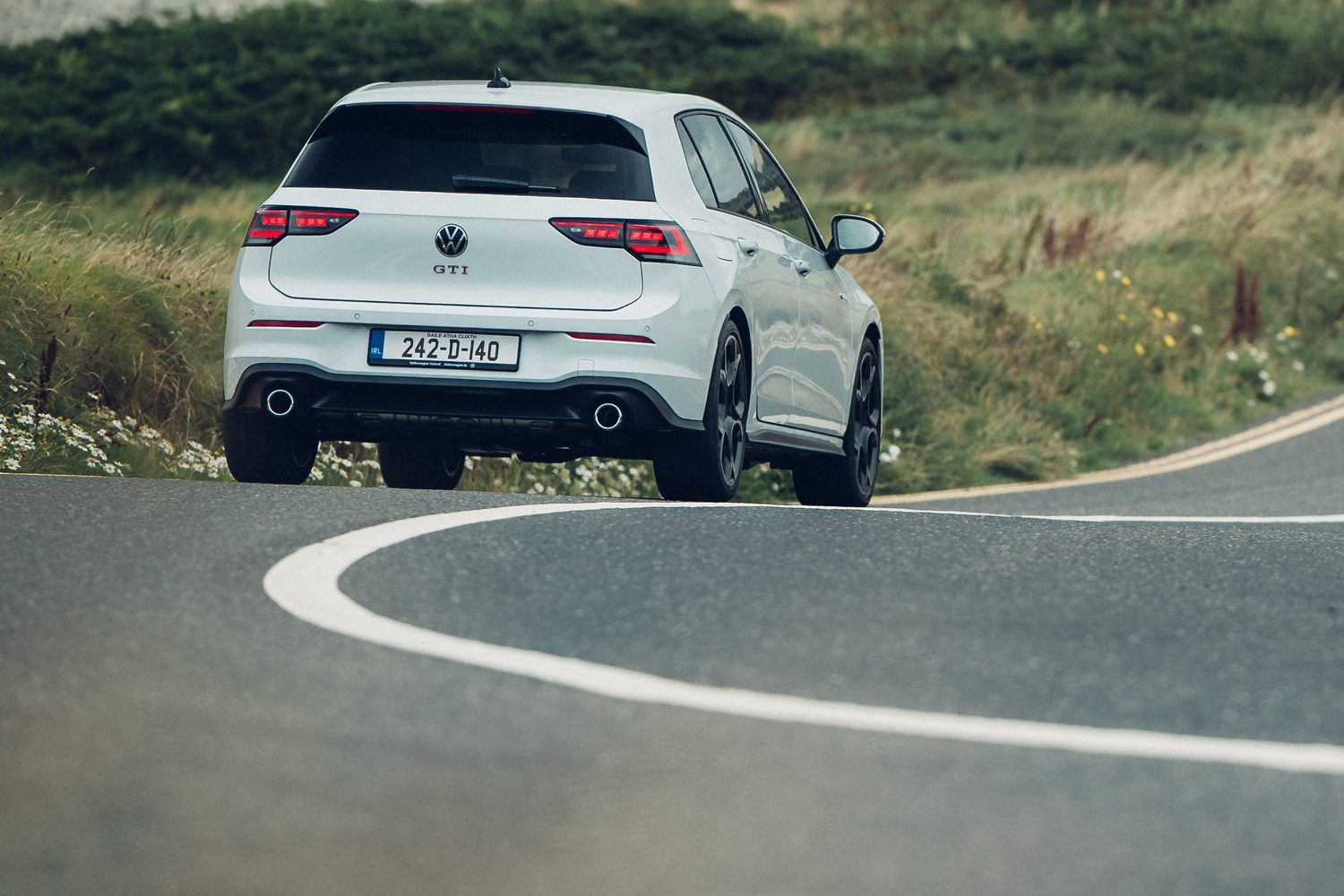
Same story with the electronically controlled front differential. These can be set up to mimic the operation of mechanical locking diffs, which are often quite aggressive on front-wheel-drive cars, but the GTI’s is quite subtle. Even on track driven to the limit in its more extreme settings this Golf just feels stable, secure, responsive and keyed into the road. In the dry conditions we tested it in, there was endless traction on tap, matching the rock-solid body control. Push further and provoke the chassis and it delivers a deliciously satisfying neutrality through tight corners, with a whiff of interaction from the rear axle if you want it. On the road, it’s safe without losing the all-important driver interaction.
The most extreme setting of the DCC will be too firm for all but the smoothest surfaces, though the Sport level isn’t bone-shaking on Irish roads, and you can always dial it down to a more pliant stage if the surface is particularly bad. While we found the GTI thoroughly entertaining on track and noticeably more engaging than its predecessor, it’s on that road that most examples will spend most of their time, and thankfully it still performs admirably there, tackling everyday driving duties with aplomb while giving the driver a thrill when the occasion arises.
Some will lament the lack of a manual gearbox option (me included), but the seven-speed DSG transmission works better than ever, allowing drivers to choose the more responsive S mode if required, or take over gear changing for themselves by using the paddles behind the tactile steering wheel.
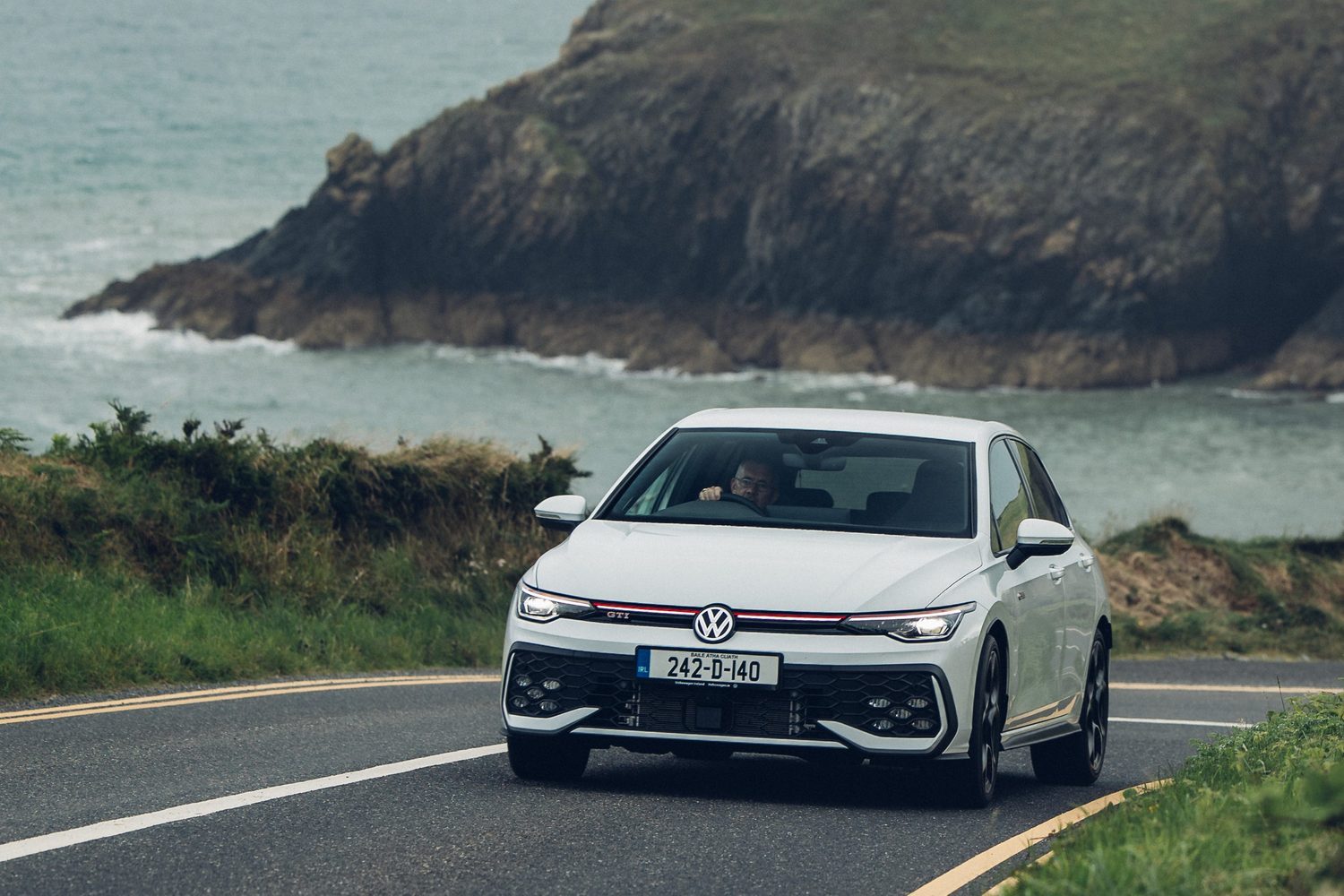
The EA888 evo4 (those German engineers do love a sexy engine code...) gets a modest update for the new GTI, gaining 20hp for a peak of 265hp, paired with up to 370Nm of torque. Those figures aren’t dramatically less than the Clubsport’s unchanged peaks of 300hp and 400Nm. A 5.9-second 0-100km/h time is rapid even in a world of fast-accelerating EVs and of course it’s accompanied by the roar of the 2.0-litre engine through the GTI’s distinctive wide-spaced exhaust outlets.
The practical side of the Volkswagen Golf GTI
One thing that has made hot hatchbacks so popular with performance car fans is the everyday practicality that they offer. With the latest Golf GTI, the basic layout remains unchanged, so there’s plenty of room for four on board - and space for five at a push - while split-folding rear seats boost its luggage-carrying ability and there’s even a ‘ski hatch’ in the middle accessible if you lower the central armrest. Within that are two cupholders as well. There are two sets of ISOFIX child seat mountings on the rear bench, while the back doors open wide enough to get a child seat inside, and separate climate controls mean those in the back can adjust the cabin temperature independently of those sat up front.

It’s the Golf GTI’s details that have been improved, especially for the driver. The large touchscreen is positioned so that it’s easily reached from the driver’s seat, and the buttons are easier to operate. Unfortunately, the climate controls are still within the touchscreen, but the temperature settings are permanently in place across the bottom, while other main menus are accessed via the touch-sensitive panel between the central air vents. There are more touch-sensitive controls just below the screen, with the return of the sliders that adjust cabin temperature and audio volume. These are largely the same as before, except they’re now illuminated at night, so there’s no more fumbling in the dark trying to heat the cabin only to crank the volume by mistake.
There are shortcuts across the top of the touchscreen to access different functions, while the home screen has large buttons for different sub menus. And if you do get too deep into the car’s menu system, the home button quickly returns you to the main display.
As well as the large touchscreen, VW’s digital dials make a return. These are some of the best driver’s displays around, with clear information and a comprehensive trip computer on offer. Control of the digital dials is via the steering wheel and there’s a particularly stylish GTI view available.
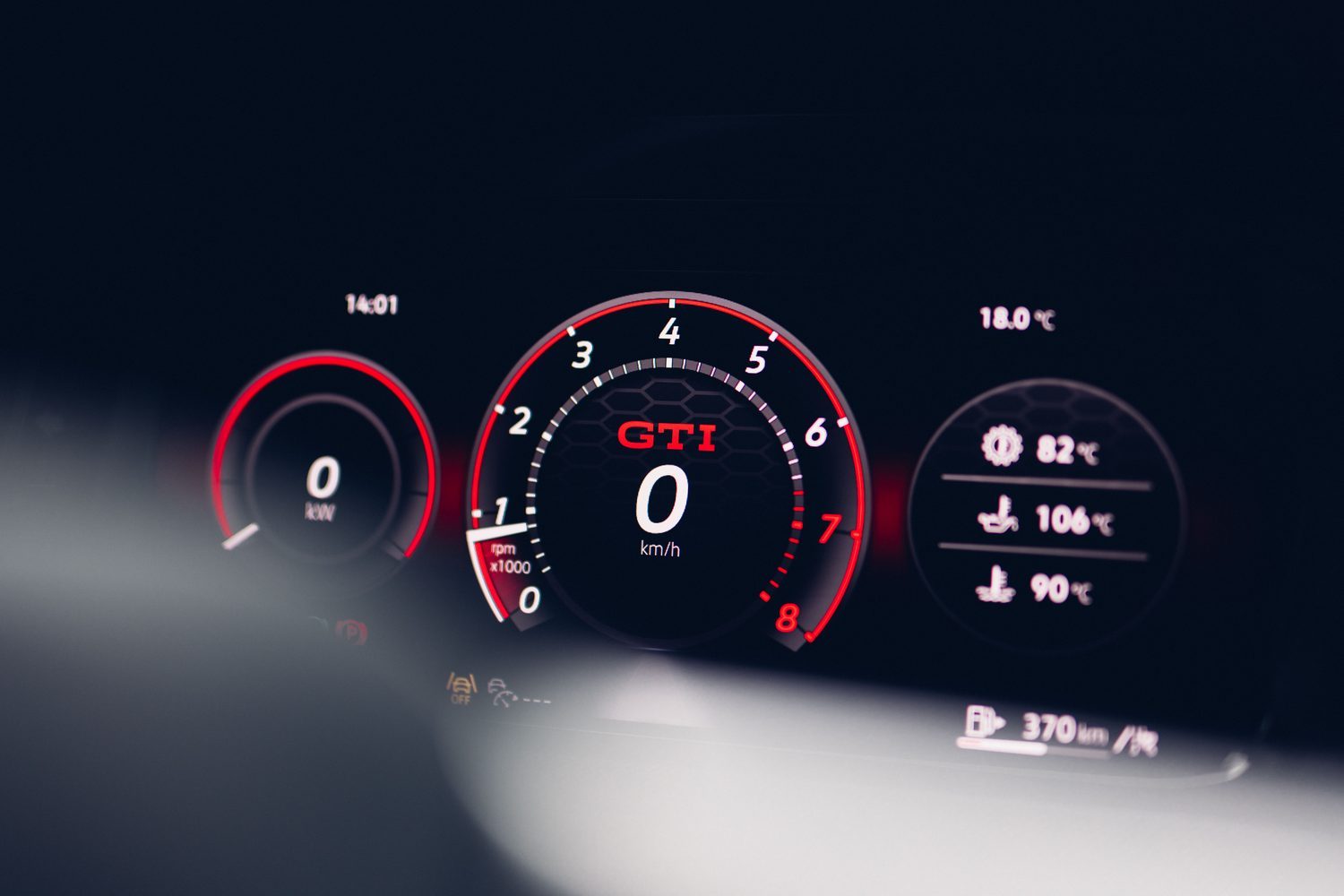
How economical is the Volkswagen Golf GTI?
While other versions of the updated Golf now come with mild-hybrid tech, this has yet to make its way to the GTI. Stop-start is included, as it has been for a couple of generations now, and this helps the GTI to deliver an official WLTP-tested return of 7.1 litres/100km. Of course, use the GTI as it’s supposed to be driven, and you can expect far worse figures than that. Still, it’s not bad on a long motorway run. In our time with the car, we averaged a decent 7.4 litres/100km.
The reasons you’d buy a Volkswagen Golf GTI
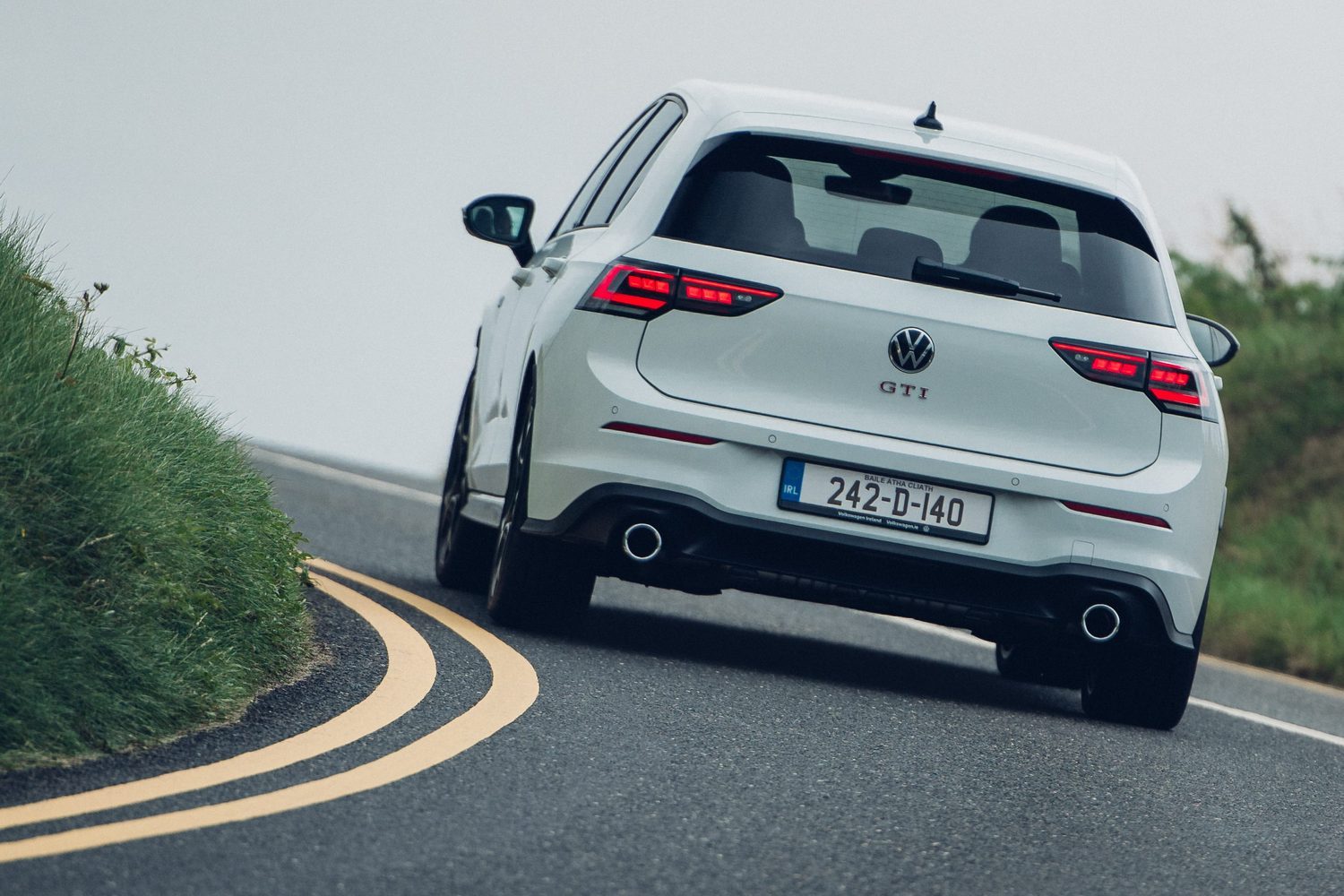
The core formula of the Golf GTI has not changed, and we’re very happy about that. It’s still a practical hatchback that can be used daily with an alter ego that will appeal to those that love to drive. The updated model is better than ever, with enhanced technology sitting beside intelligent improvements to the ergonomics inside, a refreshed exterior and chassis changes that make it more rewarding than ever to drive. If you’re a fan of new hot hatches, then this one should certainly be on your shortlist.
Ask us anything about the Volkswagen Golf GTI
If there’s anything about the Golf GTI that we’ve not covered, or you’d like advice in choosing between it and other vehicles, you can avail of our (completely free) expert advice service via the Ask Us Anything page.

